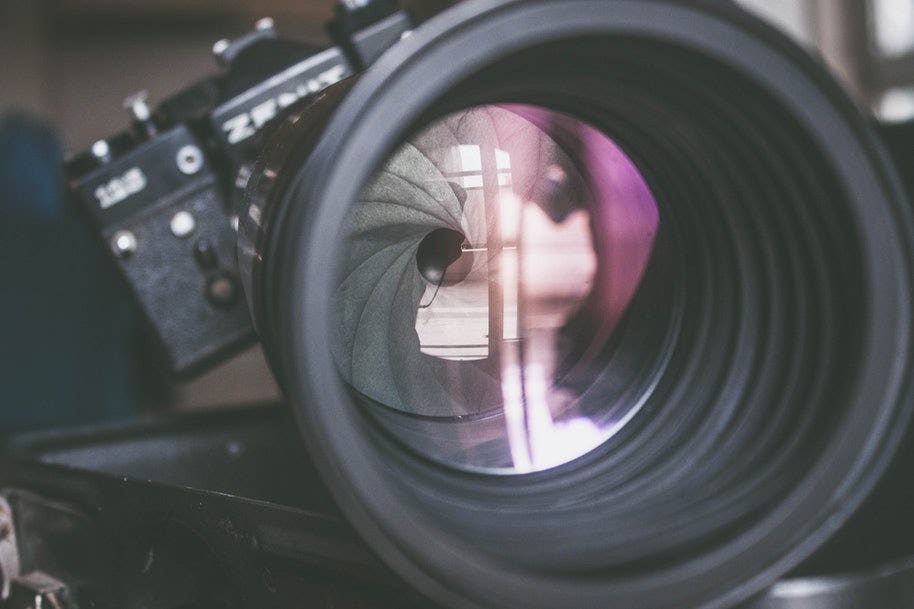
A mirrorless or DSLR’s aperture can be a tricky thing to handle. The aperture is the part of the lens that opens and closes during exposure, controlling how much light hits your DSLR’s sensors.
Mastering your aperture can give you far greater control over your photos. But what happens when your aperture isn’t working as you expect it to?
Below, we’ve listed some common aperture problems you see in both DSLRs and mirrorless cameras.
Common camera aperture problems
The corners of your photos are dark

Vignetting is when your photos come out with a darker tinge in the corners. It usually happens when your lens is capturing its own edges in a shot and is especially common when you combine wide-angle lenses with large apertures.
Try to avoid using your lens’s largest apertures (such as f/1.2 or f/1.4). To find out the largest possible aperture you can use without vignetting, just take a series of shots gradually stepping down one stop until the vignetting disappears.
Vignetting can help to create drama or help direct the viewer’s eye to the centre of the frame, so it might be a creative tool you want to embrace in some shots.
Your DSLR is underexposing your images at smaller apertures
If you have taken a photo with f/22 and it shows nothing but black, you’ve probably hit the mechanical limits of your camera.
Don’t forget, f/22 is a tiny aperture, so your camera typically compensates by letting more light in through the shutter speed or with the ISO. Yet some cameras prevent you from using a very long shutter speed to avoid camera shake – which often limits just how small your aperture can really go.
You can correct this by increasing your ISO or using Auto ISO or try to relocate to a bright destination to take photos with a smaller aperture. If all else fails, simply dial down your aperture – between f/11 and f/16 is usually a good range.
My photos are white at larger apertures
Once again, your camera is unable to perform what you’re asking of it. Your largest apertures let tonnes of light in. Sometimes your camera can’t adjust to a shutter speed fast enough – or an ISO low enough – to compensate.
Try a darker location or check your camera settings to see if you can stop your ISO down to an extremely low setting. Alternatively, just raise your settings to a slightly smaller aperture, such as f/5.6.
The smallest apertures still produce soft images
As we’ve already stated, it’s best not to use your smallest aperture wherever possible. This is because smaller apertures create an optical phenomenon called diffraction. Diffraction is where the hard edges of your aperture bend light entering the lens.
Bending happens at any aperture setting but is more pronounced in smaller apertures, causing a fuzzy appearance in your photos. The result is softer, lower contrast photos.
The only way to avoid the softer images is to decrease the aperture by one half or one full stop.
Your aperture changes automatically in aperture priority mode

This usually only occurs when you’re using a zoom lens. First, check that you’re not on auto mode. If you’re on aperture priority mode and the aperture is changing automatically, it could be that your lens has a maximum aperture that changes depending on how far you zoom in.
For example, the Canon 18-55mm kit lens changes the maximum aperture from f/3.5 to f/5.6 when you zoom from 18mm to 55mm.
You can’t get the blurry background
If you can’t get the blurry background, you might not have a large enough aperture to achieve the shallow depth of field you want. Alternatively, there could be too much distance between yourself, the subject, and the background.
First, check that your focus is trained on the subject and not on the background. Sometimes, it works to change to manual focus.
If your focus is correct, try moving closer to your subject – as close as you can get while maintaining focus. Or you can bring the subject further away from the background.
You’re getting overexposed photos and the wrong depth of field

Overexposed images and the wrong depth of field may occur if your aperture is failing to stop down during exposure.
This can happen if you have a faulty aperture ring – sticky blades or a broken spring, for example. You can check the problem by switching to manual mode to set your camera at the smallest aperture with a slow shutter speed. Take photos while the camera faces you and you’ll be able to see if the aperture ring is working or not.
Sticky blades are a common issue in old lenses, which have oil on their blades. When the oil congeals, the blades are slow to close. Or they don’t close at all.
You might also get a sticky aperture ring after leaving your camera in an area with high temperatures for a long time (such as in your car on a hot day).
If you have sticky blades, it’s best to drop off your camera at a specialised repair store, since the lens will need to be disassembled.
Were you able to find and troubleshoot your DSLR aperture problem? If it still isn’t fixed, why not head to your nearest Camera House store? Our experienced team will be ready to answer any of your questions and will do what they can to get your camera back in working condition.
